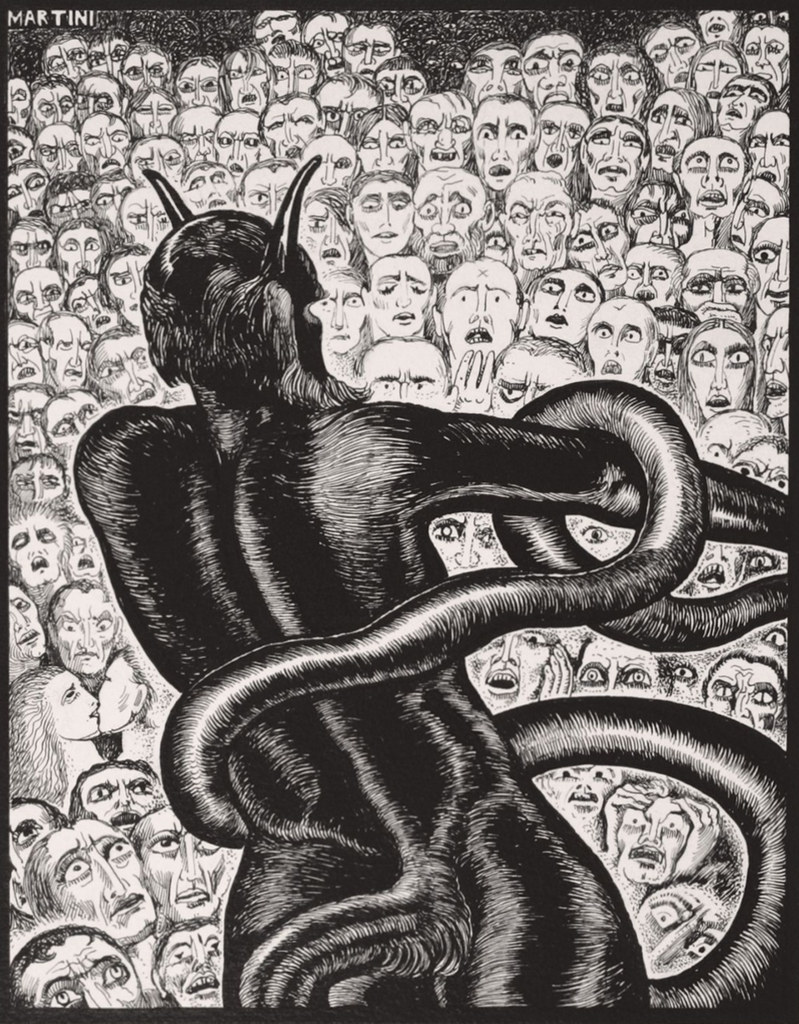 Minós (Inferno, V), 1937
Minós (Inferno, V), 1937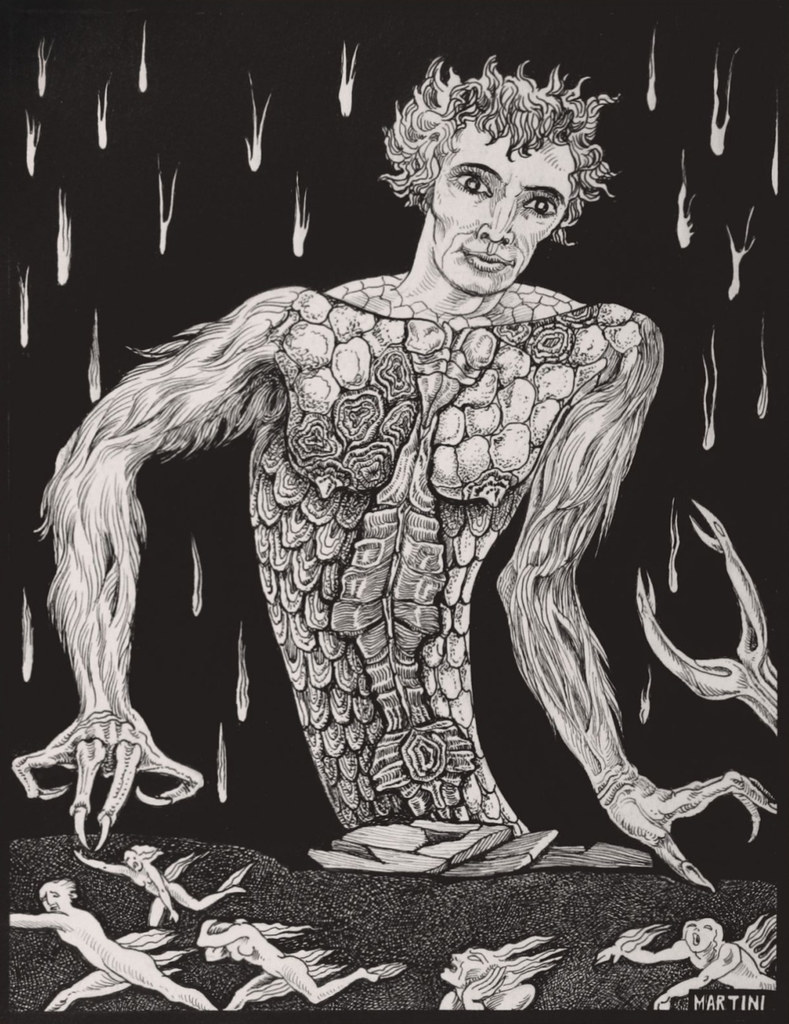 Gerion (Inferno, XVII), 1937
Gerion (Inferno, XVII), 1937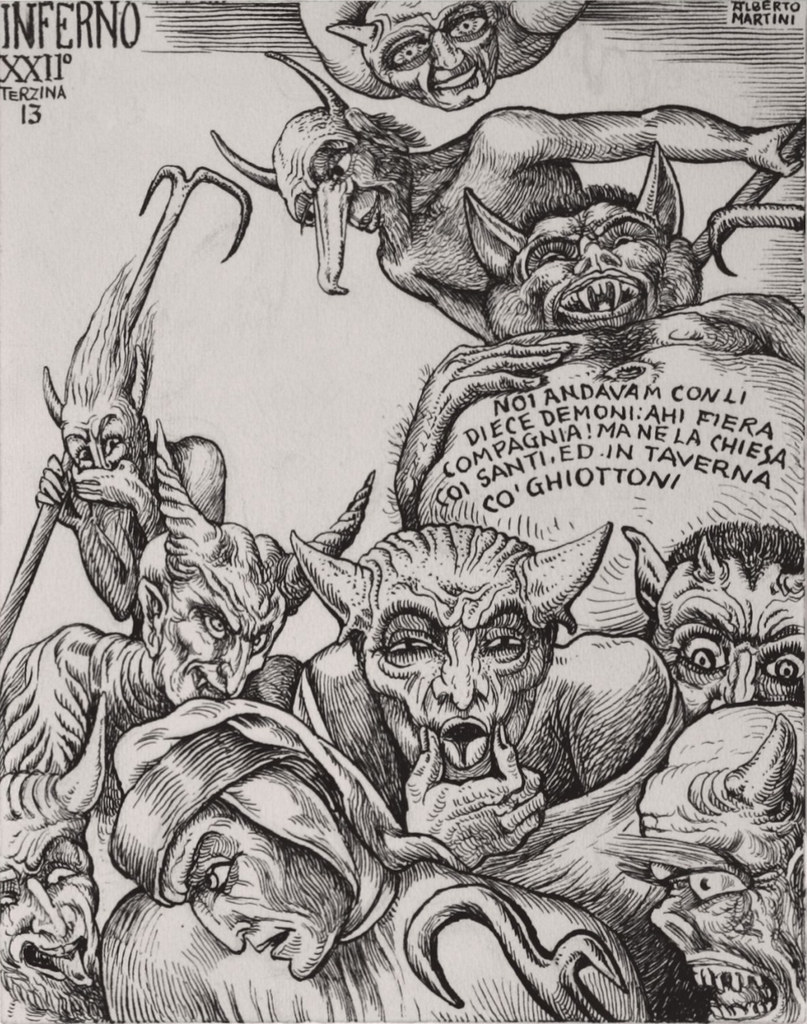 Dante (Inferno, XXII), 1937
Dante (Inferno, XXII), 1937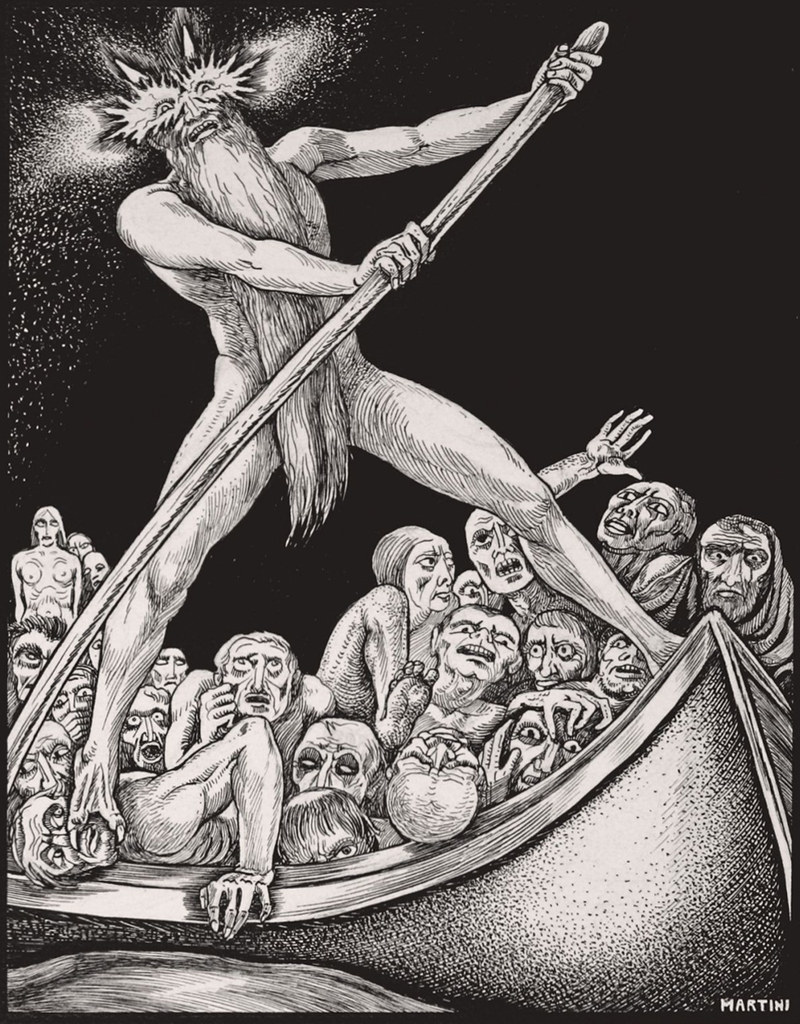 Acheronte (Inferno, III), 1937
Acheronte (Inferno, III), 1937 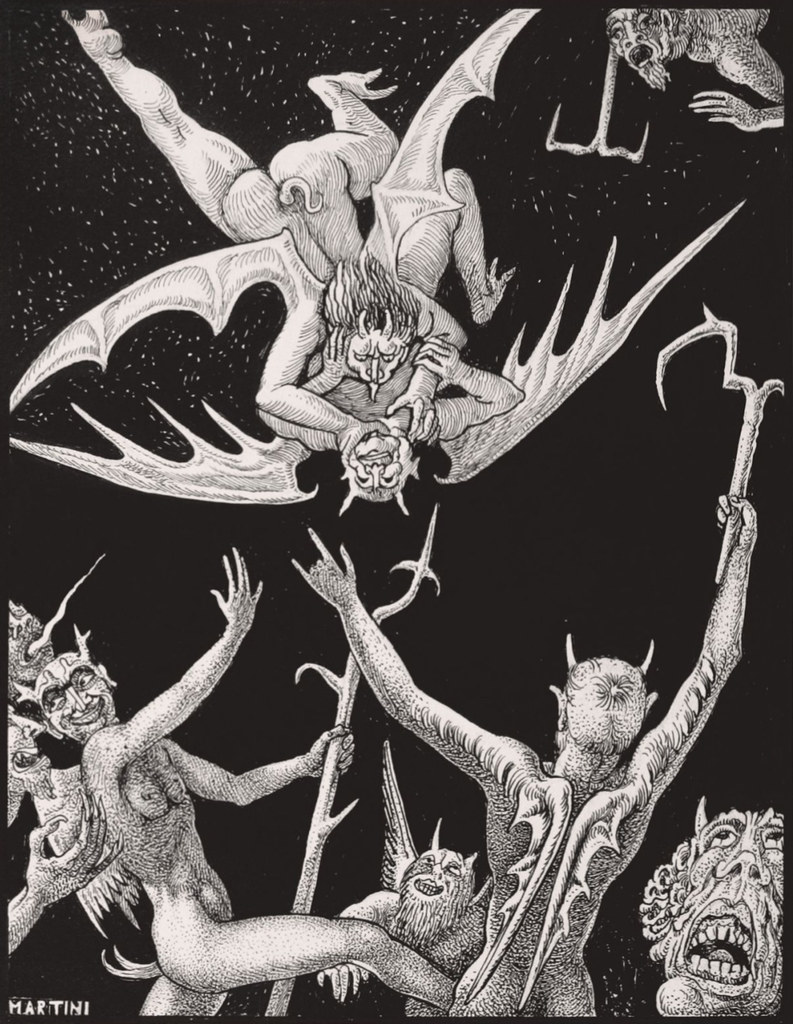 Alichino and Calcabrina (Inferno, XXII), 1937
Alichino and Calcabrina (Inferno, XXII), 1937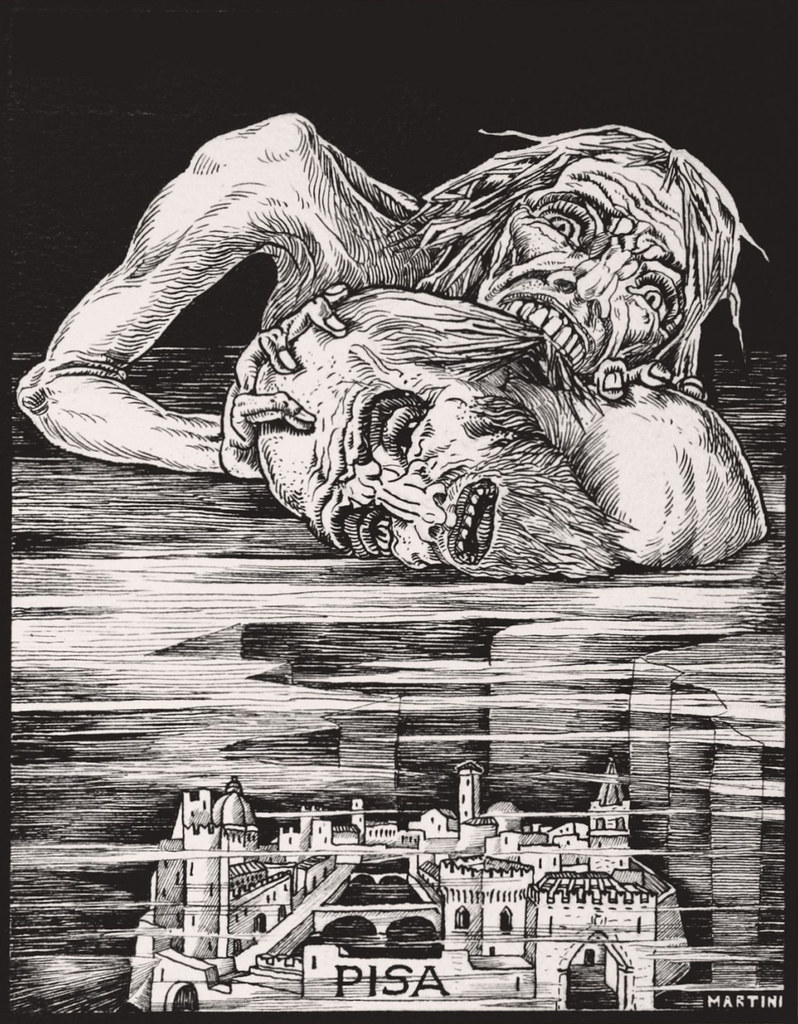 Inferno - XXII, 1937
Inferno - XXII, 1937"In 1901, Vittorio Alinari, head of Fratelli Alinari, the world’s oldest photographic firm, decided to publish a new illustrated edition of Dante’s Divine Comedy. To do so, Alinari announced a competition for Italian artists: each competitor had to send illustrations of at least two cantos of the epic poem, which would result in one winner and a public exhibition of the drawings. Among the competitors were Alberto Zardo, Armando Spadini, Ernesto Bellandi, and Alberto Martini.
While Martini did not win the competition, he, as Vittorio Sgarbi wrote in his foreword to Martini’s La Divina Commedia, “seemed born to illustrate the Divine Comedy.” The 1901 contest was followed by two more sets of illustrations between 1922 and 1944, which produced altogether almost 300 works in a wide range of styles, including pencil and ink to the watercolor tables painted between 1943 and 1944. While repeatedly rejected publication during his lifetime, a comprehensive edition of Martini’s La Divinia Commedia is available today.
With his feeling for the grotesque and the macabre, Martini’s work was much more influenced by the Northern Mannerism movement than Italian art and is often seen as a precursor to Surrealism, as Martini was a favorite of André Breton. However, while steeped in the surrealism of Odilon Redon and Aubrey Beardsley black and white counterpoints, Martini’s Divine Comedy is filled with an original sense of fantasy and beautifully conveys Dante’s more abstract imagery. Needless to say, Martini’s interpretation was very much in a world apart from the Italian Futurist and Metaphysical movements of the day." - quote source
Images found at Luna Sabatica's tumblr.
More works by Martini can be found in his Danza Macabra Europea series from 1915 and his Edgar Allan Poe illustrations.

No comments:
Post a Comment